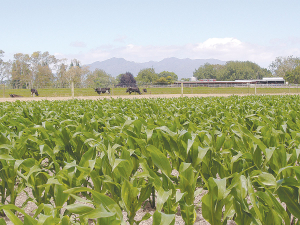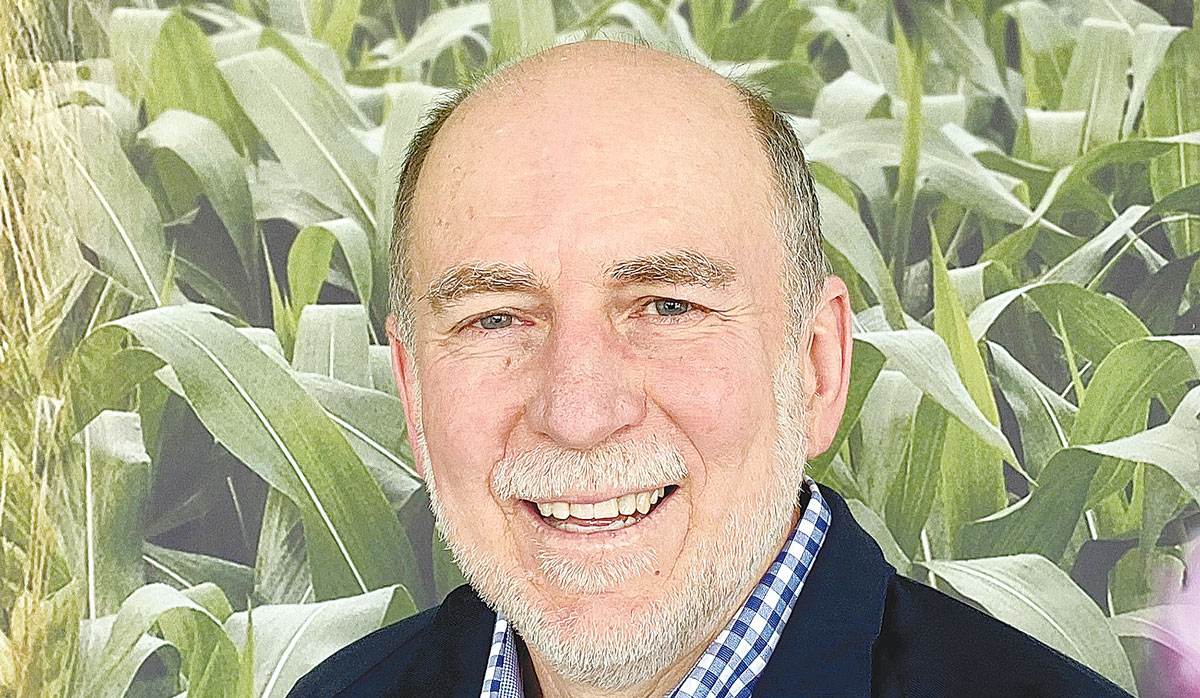Three new grower directors appointed to FAR board
Effective from 1 January 2026, there will be three new grower directors on the board of the Foundation for Arable Research (FAR).
 Foundation for Arable Research senior maize researcher David Densley says nitrogen fertiliser are still a significant contributor to the cost of maize production. For the 2023-24 maize production season, the projected total fertiliser cost is forecast to reduce by almost $390/ha compared to last season.
Foundation for Arable Research senior maize researcher David Densley says nitrogen fertiliser are still a significant contributor to the cost of maize production. For the 2023-24 maize production season, the projected total fertiliser cost is forecast to reduce by almost $390/ha compared to last season.
Agronomic tools and practices are available for maize growers facing the headwinds of increasing costs of production, extreme weather events and environmental considerations, Foundation for Arable Research senior maize researcher David Densley says.
While nitrogen fertiliser prices have eased from the peaks of the last two years, these are still a significant contributor to the cost of maize production, says Densley, who led a series of FAR winter maize workshops throughout the North Island and in Canterbury.
For the 2023-24 maize production season, the projected total fertiliser cost is forecast to reduce by almost $390/ha compared to last season. Fertiliser costs are projected to fall to 43% of the total cost of production, compared with 51% in 2022/23, using information from the Pioneer Maize for Silage catalogue. Nitrogen is expected to make up 40% of the total fertiliser budget in the 2023-24 season down from 475 the previous year.
While production costs for maize silage have increased on average by $51/ha a year over the last 26 years, since the 2019-2020 season this rise has jumped to $270/ ha/annum.
Total maize silage growing costs are predicted to be about $3,438/ ha, slightly down on last year.
Farmers can save money in nitrogen (N) costs as well as make environmental gains by making better use of plant available N naturally present in the soil, Densley says.
Rather than applying a standard amount of nitrogen fertiliser, growers are encouraged to measure how much N is in the soil (using a MinN test), as well as what might become available during the growing season (Potentially Available N) and take this into account when determining crop N fertiliser requirements. As well as reducing the risk of N leaching, N fertiliser is the main source of greenhouse gas emissions from a maize crop which government plans to tax.
 |
|---|
|
David Densley |
“A lot of people are soil testing, but most people aren’t using this information to determine their N fertiliser application rates.
“Our research suggests that even after long-term maize production there can be a significant amount of mineral N in the soil available to the maize plant.
“Measuring mineral N ahead of side dressing provides the opportunity to reduce input costs without compromising yield.”
As soil mineral N levels are variable across a field, consideration should be given to where samples are collected, he says.
The amount of N which becomes available during the growing season can be significant, so it is also worth measuring for Potentially Mineralisable N.
In terms of agricultural emissions, benchmarking of 20 maize systems showed average annual GHG were 2 tonne CO2e/ha for grain. Silage is higher at 3.5t CO2e because of the influence livestock have on emissions within the production system.
Horticulture New Zealand (HortNZ) says a new report projects strong export growth for New Zealand's horticulture sector highlights the industry's increasing contribution to the national economy.
Fonterra shareholders say they will be keeping an eye on their co-operative's performance after the sale of its consumer businesses.
T&G Global says its 2025 New Zealand apple season has delivered higher returns for growers, reflecting strong global consumer demand and pricing across its Envy and Jazz apple brands.
New Zealand's primary sector is set to reach a record $62 billion in food and fibre exports next year.
A new levying body, currently with the working title of NZWool, has been proposed to secure the future of New Zealand's strong wool sector.
The most talked about, economically transformational pieces of legislation in a generation have finally begun their journey into the statute books.
President Donald Trump’s decision to impose tariffs on imports into the US is doing good things for global trade, according…
Seen a giant cheese roll rolling along Southland’s roads?